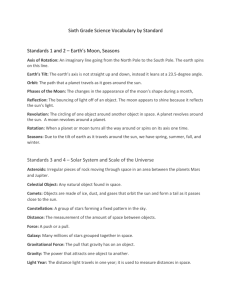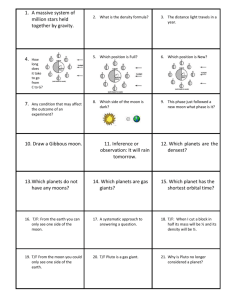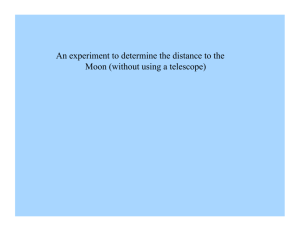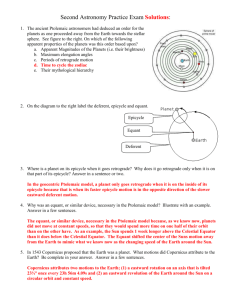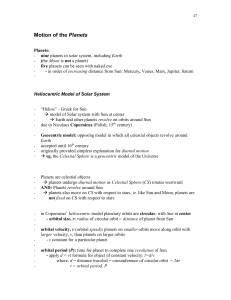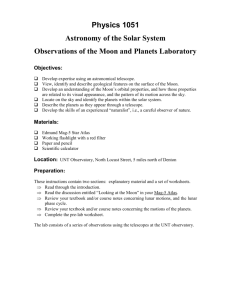Lecture2
advertisement
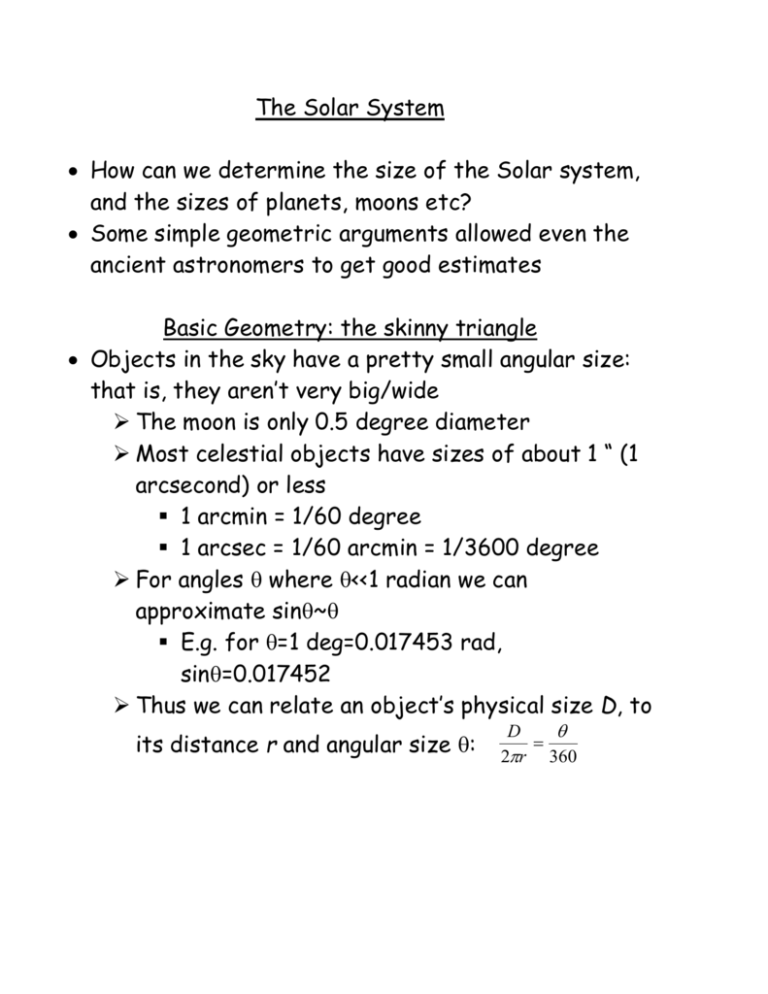
The Solar System How can we determine the size of the Solar system, and the sizes of planets, moons etc? Some simple geometric arguments allowed even the ancient astronomers to get good estimates Basic Geometry: the skinny triangle Objects in the sky have a pretty small angular size: that is, they aren’t very big/wide The moon is only 0.5 degree diameter Most celestial objects have sizes of about 1 “ (1 arcsecond) or less 1 arcmin = 1/60 degree 1 arcsec = 1/60 arcmin = 1/3600 degree For angles where <<1 radian we can approximate sin~ E.g. for =1 deg=0.017453 rad, sin=0.017452 Thus we can relate an object’s physical size D, to its distance r and angular size : D 2r 360 Size and Shape of Earth Evidence that the Earth is round: At sea, land at sea level disappears before hills Ship hulls vanish before their masts The altitude of stars depends on latitude The shadow of a lunar eclipse is always circular Eratosthenes calculated the size of the Earth using a simple geometric argument Compare the height of the Sun at two different locations, at the same time. Result was very close to the known value today Distance to the Moon Eclipses show the Moon is between Earth/ Sun Lunar eclipses can be used to determine the distance to the moon Since we know the diameter of the Earth (13000 km), and the angular size of the Sun (0.53 deg) we can work out the size of Earth’s shadow. Comparison with the angular size of the shadow on the moon gives the distance to the moon, about 350,000 km. Distance to the Sun: Aristarchos used another simple geometric argument, based on the phases of the Moon When moon is in quarter phase, Earth-MoonSun must form a right-triangle By measuring the angle between the Moon and Sun, as viewed from Earth, you can solve the triangle The angle is 89.75 degrees, very difficult to measure accurately. The distance to the Sun is then 350,000/cos(89.75). Since the angle is close to 90 deg, the cosine is close to zero. A small error in measurement leads to a very wrong answer. Planetary Motions Planets are observed to move relative to the background stars Motion is generally regular, but sometimes shows retrograde motion that was very difficult to explain in geocentric theories Led to use of epicycles In a heliocentric theory retrograde motion is a natural consequence of the inner planets orbiting more quickly than the outer planets Distances to planets can be determined using simple geometric calculations Interior: measure angle between planet and the Sun at greatest elongation (when they are farthest apart) Exterior: measure same angle, separated in time by planet’s orbital period. Copernicus had excellent values for all of the known planets, but they were less precise for the outermost ones (Jupiter and Saturn) because their periods are long enough that fewer oppositions could be observed Kepler’s Laws Based on very accurate orbital data obtained by Tycho Brahe, Kepler derived three laws of orbital motion: 1. A planet orbits the Sun in an ellipse, with the Sun at one focus 2. A line connecting a planet to the Sun sweeps out equal areas in equal time intervals 3. P2=a3, where P is the period and a is the average distance from the Sun. Some useful equations (valid when M>>m): 4 2 a 3 G( M m) General form of K3: P2 Energy equation: E Vis-Viva equation: 1 1 v 2 (r ) 2GM r 2a GMm m 2 GMm v 2a 2 r In all of these: M is the mass of the heavier body m is the mass of the smaller body a is the size of the semimajor axis v is the orbital velocity r is the distance between M and m P is the orbital period E is the total energy




